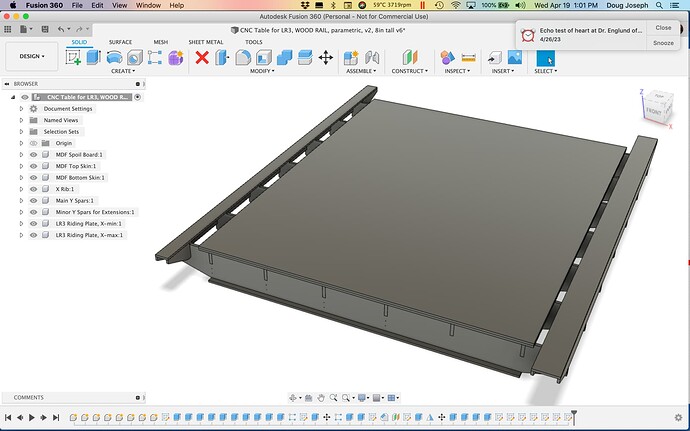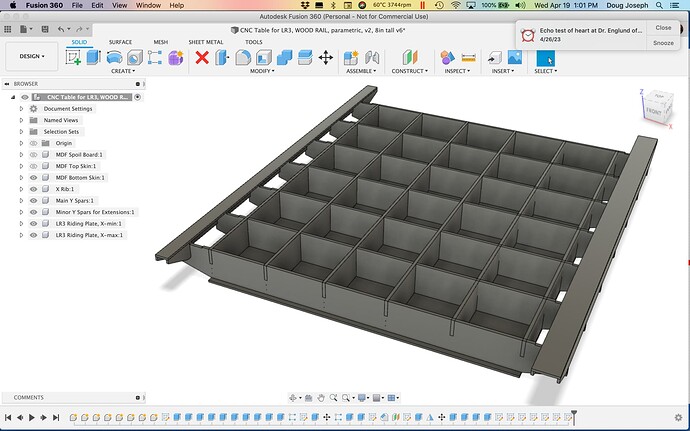If you begin with the 8" tall version I posted here: More parametric CNC-cut tables for LowRider v3 (full sheet+): 3.625", 6", and 8" tall versions
… It widens to 2 meters with only two quick fixes needed.
Here’s a Fusion 360 file I’ve done that to:
CNC Table for LR3, WOOD RAIL, v2, 78.74’ x 97’', 8in tall (v6).f3d.zip (504.4 KB)

